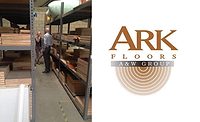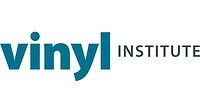LVT is H-O-T: The Next Step for Luxury Vinyl Tile
Few flooring materials have stormed the industry ramparts like luxury vinyl tile. At home in commercial as well as residential settings, LVT is expanding options for designers and specifiers alike.
For a firmer grasp on this fast-growing flooring, we asked FreeFit Flooring VP Sales & Marketing Keith Lacognata, IVC US CEO Xavier Steyaert and Zack Zehner, VP Commercial Hard Surfaces for Mannington Commercial what they think is driving this phenomenal growth, whether it can be sustained and what LVT brings to the table when it comes to design.
National Floor Trends: Relatively speaking, Luxury Vinyl Tile is something of a newcomer to the floor covering scene, yet it’s growing like wildfire: it’s today’s “It” category. To what do you attribute this tremendous popularity?
Zack Zehner: LVT is the fastest growing category in flooring – it’s popular across a wide variety of commercial segments, from healthcare to retail, from corporate to education and higher education, and even hospitality. This interest has been driven first by styling and the opportunity for new looks, whether it’s a look inspired by natural materials, textiles or abstract concepts.
But interest has only grown as designers and facilities managers have discovered LVT’s quality, durability, superior performance, low maintenance, lower lifecycle cost, and ease of installation including Mannington’s LockSolid glueless locking system.
Residentially, LVT has enjoyed strong double-digit growth, even throughout these past few economically challenging years. Like the commercial segment, consumers are drawn to LVT for its incredibly realistic designs, ease of maintenance, superior performance characteristics and installation options. Retail salespeople love LVT for these same reasons – it’s easy to sell to consumers because it has such tangible benefits.
Keith Lacognata: I attribute the growth to the versatility of floating LVT. FreeFit gives the homeowner options, which they never had before. Less floor prep, installation over existing substrates, fast and clean installation, and ease of maintenance. Special manufacturing techniques combined with the chemical makeup of FreeFit for instance increases the durability, scratch resistance and indentation resistance of the product. Technology has come so far that it’s difficult to distinguish between some of the upper-end LVT and hardwood.
Xavier Steyaert: LVT’s popularity can be attributed to the same elements that made laminate successful such as appeal to the DIY market: its modular composition and realistic visuals. Where LVT eclipses laminate is in durability and flexibility. Because LVT’s composition includes PVC, the product is much more resistant to damages in addition to being water and scratch resistant. Plus, improved embossed techniques give LVT a much more realistic look than laminate.
NFT: The commercial market is seeing a lot of LVT, and not in just some general “beige” sense; there are a lot of different looks and feels out there, with more entering the market almost daily. Talk a little about the most popular looks out there today; what are people clamoring for?
XS: In commercial, the same general trends are happening in LVT as in other hard surfaces. Wider, more rustic woods with character are important as are exotic woods. Reclaimed woods in a variety of widths give the space a feeling of authenticity. Grays continue to be important in addition to the established warm yellow and red based hues. In stones, it’s about larger formats in squares as well as offset rectangular designs. Realism in stones comes from patina and irregularity. Colors are complex neutrals that work with cool metals but have a hint of inner warmth.
ZZ: LVT built momentum in gaining market share through a realistic mimicking of wood, stone and other natural materials. Quickly, manufacturers started focusing on other looks as well; in 2009 we partnered with HOK to develop Create, which celebrates LVT as a medium. Rather than replicating natural materials, it used new technologies to give a textile-like texture, and modular shapes – circles, diamonds and squares – that provided truly customizable installations and patterns.
Today, we’re running products inspired by the beauty of raindrops on glass, of linens, and much more. Also very popular are the variety of treatments that include beveled, grouted, square, tumbled and sculpted.
KL: We have thought outside the box of the regular LVT looks. We launched Intaglio, the first sculpted LVT. We have recently launched travertine and slate decors that resemble the original looks of stone, and our hottest look of the year is High Definition Carpet Tile. Our customers thought we were getting into the carpet tile business at first, until they felt it. You cannot tell the tiles are vinyl. The high definition décor show the fibers of the yarn, twists of the fiber & surface texture that mimic a tufted carpet tile.
Nature’s Path from Mannington Commercial
NFT: Name three things LVT can bring to a commercial project that other flooring materials cannot.
XS: Ease of installation. Versatility of design. Durability.
KL: Green properties (LEED Credits). Durability, and ease of maintenance.
ZZ: One, a wide variety of aesthetics, without any compromise of performance. Two, design flexibility through modular sizes and shapes. Lastly, ease of installation – including installation over high moisture areas or where asbestos removal might be a concern.
NFT: Let’s flip that around: where, commercial or residential, should LVT perhaps not be specified, and why?
KL: I would say with the traditional LVT products that are glued down, high-moisture-prone areas need to be watched. Also, areas that are prone to indentation, such as dance floors with woman wearing stiletto heels should be avoided.
ZZ: On the commercial side – projects where the space or specifier calls for carpet, or in healthcare settings where homogeneous sheet flooring is a better application. On the residential front, there’s really nowhere that LVT cannot go. Because it’s practically waterproof, it’s an excellent choice for laundry rooms, bathrooms, kitchens, and basements. Even in bedrooms, where carpet is the norm, LVT offers good indoor air quality characteristics and won’t trap dust or pet dander, helping to reduce the presence of those allergens.
XS: Areas that require no seems such as operating rooms, or areas that require aggressive chemical cleaning that can be abrasive to the product itself.
NFT: What’s the biggest myth or misconception people have about LVT?
KL: It’s vinyl. People are used to a typical plastic looking floor. With the advancements made on the resolution of the décor papers and surface textures, it’s difficult to tell the difference between LVT and hardwood.
XS: Because it has gained popularity so quickly, the market is crowded with companies offering LVT, which means customers have access to both high- and poor-quality products. This makes it very important for consumers to do their homework before choosing an LVT supplier. I also hope that consumers will not make a conclusion too quickly because they had a bad experience with a faulty company. Eventually, LVT will go through a pruning process or natural clean-up of the category.
ZZ: First of all, it’s not your grandmother’s vinyl. While LVT has all of the performance attributes of vinyl – cleanability, versatility, etc – it also brings in the beauty of natural materials through enhanced visuals and the variation that comes from using plank and tile formats. Because of this, some people also assume that LVT is only good for mimicking natural materials, but it’s also opened doors for new looks and feels that could never be achieved in wood or stone, such as embossed in register design features, a visual inspired by textiles, and more.
NFT: What’s the next big “thing” on the horizon for LVT? Materials? Looks? Formats?
KL: In our case, we already have prototype product being made in an octagon-shaped tile. I can see advancements being made to the finishes being used, making the surface less prone to scratching.
XS: IVC made – not sourced - LVT products.
ZZ: With Mannington’s acquisition of Amtico, we see new possibilities for pushing the aesthetics of the product forward in the commercial market, while also maintaining our commitment to manufacture LVT in the United States.
LVT is inherently recyclable, and we believe that this will be key for the LVT market. We have a well-known leadership position in incorporating post-industrial and post-consumer recycled content into VCT, and we’re challenging ourselves on ways to incorporate recycled content into LVT at levels that change the industry standards on what’s possible – while maintaining our own high standards of performance. We want to see industry as a whole continue pushing LVT toward end-of-life recyclability and making it a more sustainable product.
Looking for a reprint of this article?
From high-res PDFs to custom plaques, order your copy today!





.jpg?height=200&t=1740090466&width=200)